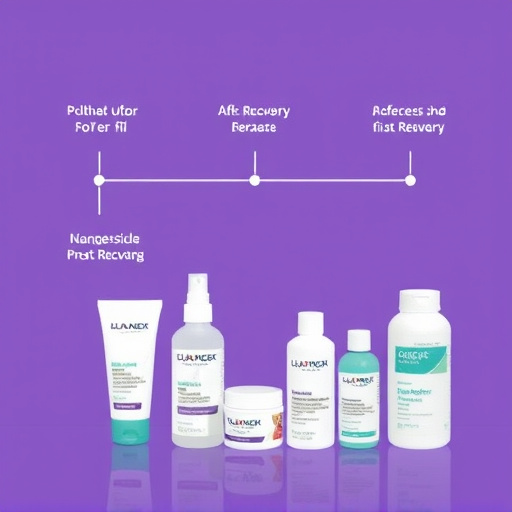Optimizing coolant flow within an engine is crucial for performance and longevity, addressing challenges like heat protection shields obstructing cold air intake. Strategic placement of cooling components, including cold air intakes (CAIs) and modified heat protection shields (HPS), ensures uniform distribution of cool air throughout the engine, enhancing efficiency and preventing overheating. CAIs draw in cooler external air for better fuel burning and increased horsepower, while HPS act as barriers against direct heat exposure, maintaining consistent operating conditions and extending component lifespans. Together, these strategic techniques significantly improve temperature regulation, boosting system efficiency and reliability.
In today’s high-performance vehicles, strategic cooling management is essential for optimal engine longevity. This article delves into the critical aspect of coolant flow and its inherent challenges. We explore how strategic placement of components like cold air intakes and heat protection shields can enhance cooling efficiency. By understanding these techniques, vehicle engineers and enthusiasts alike can achieve better thermal control, ensuring engines stay cool under intense conditions.
- Understanding Coolant Flow and Its Challenges
- The Role of Cold Air Intake and Heat Protection Shields
- Strategic Placement Techniques for Optimal Cooling Performance
Understanding Coolant Flow and Its Challenges

Understanding Coolant Flow and Its Challenges
Strategic placement for cooling begins with a deep understanding of coolant flow within an engine. Coolants, often a mix of water and antifreeze, play a vital role in maintaining optimal temperatures. Efficient flow ensures that hot areas receive active cooling, preventing overheating and associated damage. However, challenges arise from factors like heat protection shields that can obstruct the path of cold air intake, hindering efficient coolant circulation.
These barriers, designed to safeguard components from direct exposure to heat, can inadvertently create a labyrinthine flow pattern, leading to localized hot spots. To counter this, strategic placement involves careful design and consideration of airflow dynamics. Incorporating features like strategically placed vents or modified heat protection shields that allow for unobstructed cool air intake is crucial in ensuring uniform coolant distribution across the engine’s surface.
The Role of Cold Air Intake and Heat Protection Shields

Strategic placement of cooling components, such as cold air intakes and heat protection shields, plays a pivotal role in enhancing engine performance and longevity. Cold air intake systems are designed to draw in cooler external air, which is then directed directly into the engine’s combustion chamber. This cool air is denser, containing more oxygen molecules, leading to improved fuel burning efficiency and increased horsepower. By directing cold air precisely where it matters most, these systems can also reduce turbulence within the engine, minimizing unnecessary heat generation.
Heat protection shields, on the other hand, are critical barriers that safeguard sensitive components from excessive heat. These shields act as a barrier between hot exhaust gases and vulnerable parts like sensors, wiring harnesses, and electrical components. By preventing direct exposure to high temperatures, they not only extend the lifespan of these elements but also ensure optimal performance by maintaining consistent operating conditions. Together, cold air intakes and heat protection shields work harmoniously to optimize engine temperature regulation, contributing significantly to overall system efficiency and reliability.
Strategic Placement Techniques for Optimal Cooling Performance

Strategic placement techniques are key to achieving optimal cooling performance in any system. One effective method is utilizing a cold air intake heat protection shield, which acts as a barrier between the cool intake air and hot engine components. By directing fresh, cool air directly into the engine bay, these shields can significantly enhance the efficiency of the cooling process. This simple yet powerful technique ensures that the intake air remains untainted by engine heat, allowing for better combustion and improved overall performance.
Additionally, strategic placement involves considering the natural airflow patterns within a vehicle’s engine compartment. Careful positioning of components, such as radiators and heat exchangers, can facilitate the efficient circulation of cooling fluids. For instance, placing the radiator in front of the engine, taking advantage of the forward flow of air, ensures maximum exposure to the cooler external environment. This simple design choice can make a substantial difference in maintaining optimal operating temperatures, thereby extending engine life and enhancing overall vehicle efficiency.
By strategically incorporating cold air intake and heat protection shields, vehicles can achieve optimal cooling performance. These techniques, as discussed, address the challenges posed by coolant flow and ensure efficient temperature regulation. Heat protection shields, in particular, play a vital role in deflecting heat away from sensitive components, while cold air intakes facilitate the intake of cooler air, enhancing overall system efficiency. With these strategic placements, vehicles can maintain ideal operating temperatures, ensuring both reliability and extended component lifespan.














